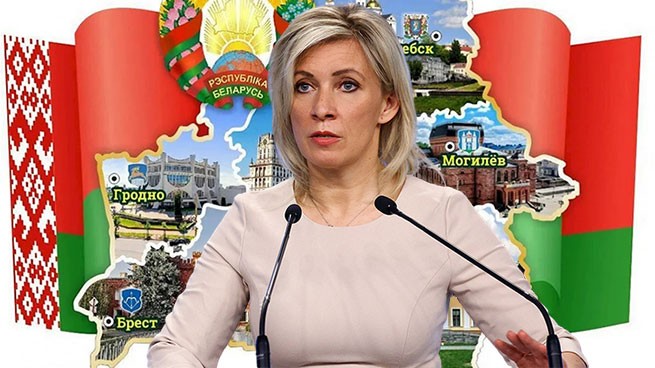Technology and finance always go hand in hand, shaping civilizations. How do changing patterns and currencies determine the future of the global economy and our lives?
Technological Orders and Currency Zones: A Symphony of Progress and Destruction
Technology and finance are two dancers who have been forever circling in the dance of human history. Sometimes they move in perfect harmony, sometimes they stumble and retreat. But their interaction always determines the course of civilization. Today we will examine not only how technological structures have replaced one another, but also how financial systems have adapted to these changes, often accompanying global tectonic shifts. Let us use the magnifying glass of reason and discover how currency, that very quiet force, has controlled the movements of world structures.
The First Order: Mechanical Revolution and Gold Coins (late 18th – early 19th century)
Steam, water and coal are the three pillars on which the first order of things was built. Factories, textile machines, mechanization and, of course, cities, which began to grow rapidly, filled the world with noise and smoke. People left the villages, turning into factory workers, and the old economic systems – mainly agrarian – were swept away by new realities.
But what was in the pockets of these workers and manufacturers? Gold and silver coins, which dominated the financial systems of the time. Each country had its own currency, tied to precious metal reserves, and the Bank of England was the heart of this mechanism. The British pound sterling had begun its dominance, but the global arena was still multipolar, and each currency followed its own course.
The Second Order: The Steam Age and the Gold Standard (mid-19th century)
Railroads stretched their steel veins across countries and continents, connecting cities and developing economies. It was the age of coal, steam locomotives, and steel. It required not only large volumes of fuel, but also stability in international finance. The gold standard became the anchor that stabilized currency exchange. Each currency was tied to gold, making it possible to more reliably predict economic transactions.
The pound sterling was once again at the centre of this system, as a symbol of international trade. Countries were gradually integrating into the global economy, and gold provided confidence in financial systems. However, the economic world was still fragmented: no single currency could claim absolute dominance.
The Third Order: Electricity and Currency Fragmentation (late 19th – early 20th century)
The age of electricity and internal combustion engines changed everything. It was a period of revolution – light, the automobile, the telephone and the radio became symbols of progress. Global trade and industry were booming, and financial systems were struggling to keep up. But World War I shattered the old order: economic systems based on the gold standard began to crumble. Countries increasingly moved away from backing their currencies with gold.
Financial crises and economic upheavals foreshadowed dark times. The war not only destroyed the old monetary systems, but also prepared the ground for a new era of international currency zones.
The Fourth Order: Mass Production and Bretton Woods (mid-20th century)
After World War II, a new order was created on the international scene – the Bretton Woods system. It was one of the most important financial agreements in history, concluded in 1944. Its essence was that the US dollar became the world reserve currency, tied to gold, and all other currencies were tied to the dollar.
This system perfectly matched the fourth technological order – the era of mass production, oil boom and development of aircraft construction. The dollar became the new “gold coin”, and the world economy regained stability. But the clouds were already gathering – the world's dependence on one currency was sowing future cracks.
The Fifth Order: The Digital Revolution and the Collapse of Bretton Woods (late 20th century – early 21st century)
Computers, the Internet, mobile phones – here they are, the symbols of the fifth order. The digital revolution has changed not only the methods of communication, but also approaches to finance. In In 1971, the United States abandoned the gold standard, ending the Bretton Woods system.Since then, the dollar has remained the leading currency, but without being tied to gold. The world entered an era of floating exchange rates, where the dollar, euro, yen and other currencies began to trade freely on the markets.
The financial system became more decentralized, but the dollar was still the dominant player. Currency zones began to form – the euro in Europe, the dollar in America, the yen in Japan. The world was preparing for new fragmentation.
The Sixth Way: The Age of Artificial Intelligence and the Disintegration into Currency Zones (since the early 2020s)
Welcome to the sixth paradigm. Artificial intelligence, big data, blockchain and robotics are changing not only manufacturing but also the global economy. Financial systems are once again on the verge of change. Currency zones are becoming increasingly clear: dollar, euro, yuan. China is seeking to make the yuan the world's reserve currency, and competition between currency blocs is intensifying.
Blockchain and cryptocurrencies are beginning to threaten traditional currencies, and central bank digital currencies could become the new reality. Globalization is failing, and the world is beginning to fragment into several large currency zones, with each major power seeking to protect its economic interests.
The Seventh Way: Bioengineering and Quantum Currencies (2030s Forecast)
In a future that seems incredibly close, bioengineering and quantum technologies will take center stage. Currency zones may reach their apogee. China, the US, Europe and perhaps India will compete for influence by basing their currency systems on new technologies. Quantum computing and cryptocurrencies may become key elements of financial infrastructure.
In this world, fragmentation will continue, and each state will strive to create the most autonomous currency zone that can protect its economic interests.
The Eighth Way: The Posthuman Era and the Disappearance of Currency Zones (Forecast for the 2040s and Beyond)
And so we are on the threshold of a post-human era, where quantum communications and thermonuclear energy can transform the entire structure of society. This may be the era when currency zones cease to exist as such. Global digital currencies or even resource currencies tied to rare materials or energy will replace the money we are used to. Perhaps the world will enter a new economic reality, where national currencies will lose their meaning.
And so, reader, we have traced the history of the ways of life and their connection to currency systems. Like great symphonies, they have their ups and downs, moments of harmony and dissonance. Currency zones are the result of the fragmentation the world is facing now, and this process will only intensify. But remember that technology and finance always go hand in hand, and in the future, they may find new ways to unite us – or divide us even further.
Author's opinion: The world has always been, is and will be an arena of struggle for influence. Technological structures? They are only a tool, steps on the ladder of progress, which civilizations climb, not always realizing that their next move is an inevitable fall or rise.”
Financial systems? Pfft… Dollar, euro, yuan – they are always changing, like everything in the world that is not backed by fundamental principles. Only stability and control bring real power. The world is fragmenting into currency zones not because people are stupid, but because they are unable to agree on a single system. And it is good that this is so: each bloc strives for its own superiority, and I am watching this. It doesn't matter who is in power, technology or finance. The main thing is who controls these resources. And this control is always with the one who understands the importance of patience, analysis and strategic calculation.







More Stories
The Hill: The Hidden Costs of US Involvement in Ukraine
Bloomberg: Europe will hardly feel the end of Russian gas transit through Ukraine
The New York Times shared details of the pager operation